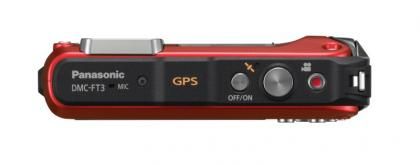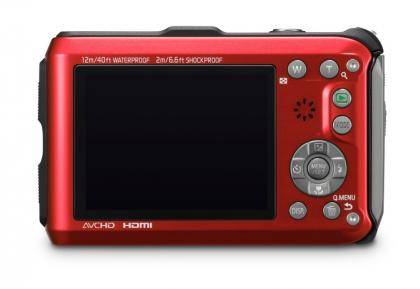There's no shortage of rugged, waterproof cameras, but the Panasonic FT3 is as resilient as they come. It'll survive drops from two metres, can operate 12 metres underwater, or in temperatures down to -10 degrees centigrade, plus it's perfectly happy in dusty and sandy environments too. It looks reassuringly tank-like with its curved metal body and substantial door for its battery, card slot and sockets. Although we didn't test its rugged credentials to their limits, the design seems to match up with Panasonic's claims.

GPS makes perfect sense in a rugged camera. When you've taken snaps in the sea or up a mountainside, it's great to be able to plot them on a map when you get home. A GPS radio isn't enough for the FT3, though - it also has an altimeter, barometer and compass. The altimeter produced some strange results, claiming that Alexandra Palace was 13 metres below sea level, but the compass worked perfectly regardless of which angle we held the camera.
Ultimately, it's the GPS data that's most important, as this is the information that's recognised by software such as Google Picasa. As usual, it could take over an hour to get a fix on a new location. On these occasions, instead of leaving photos' GPS tags blank, it often used the last known location - resulting in some tags being 100 miles out. However, once it had got its bearings, locations were updated more quickly and tagging was usually accurate to within a few metres.

While most rugged cameras are basic point-and-shoot models wrapped up in a tough shell, the FT3 has the photographic talents to justify its premium price. It's fast, capturing a shot within two seconds of switching on. Successive shots were just 0.9 seconds apart - one of the fastest times we've seen from a compact camera. Continuous shooting was at 2.5fps and lasted for seven shots. With a fast SDHC card it could take another burst of seven shots with just one second to catch its breath. The controls are fairly simple, with little in the way of manual tweaks, but key features such as ISO speed, white balance and continuous mode are quick to access via the Q.Menu button.

